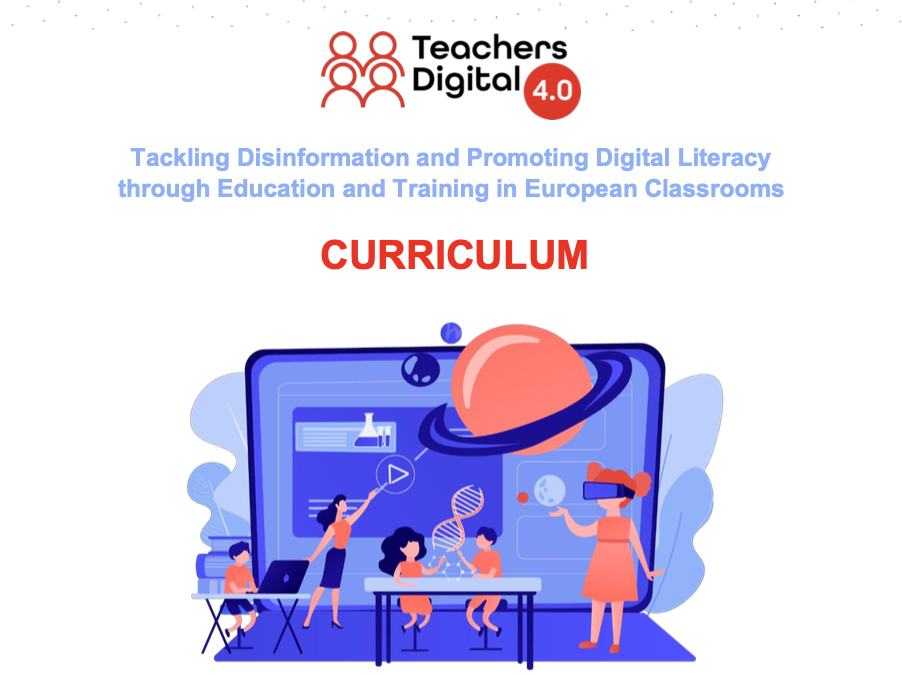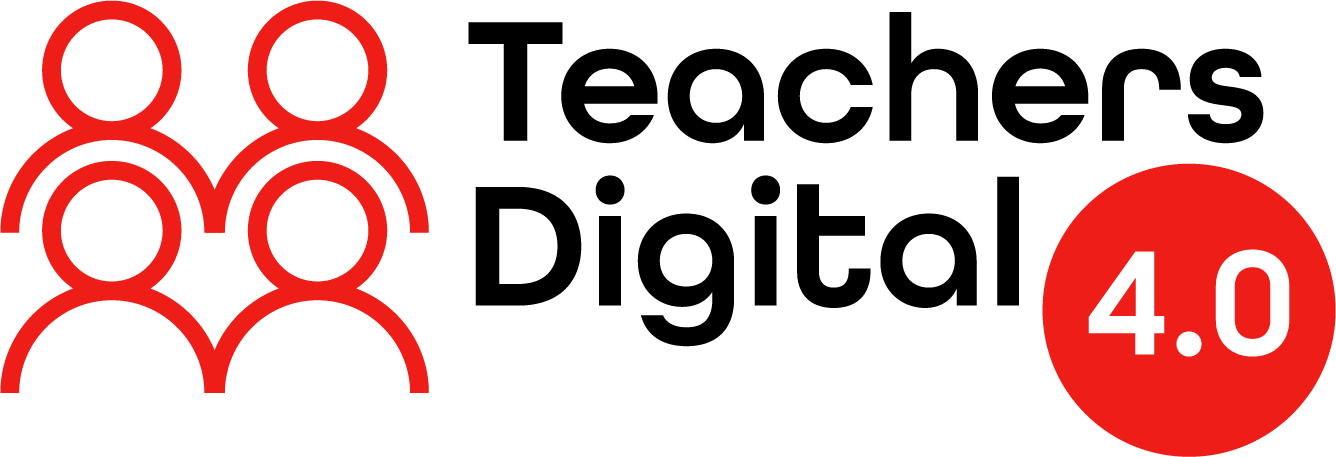
For the past one year, 34 established academics from 9 European universities and institutions have been developing an exclusive and thorough University Course entitled ‘Tackling Disinformation and Promoting Digital Media Literacy through Education and Training’. The Course results from a coordinated initiative of our large-scale EU co-funded Teachers 4.0 Digital project and is available in 6 European languages (EN,GR, IT, BG, RM, PO).
The Course is in line with the European Commission Guidelines for Teachers and Educators on Tackling Disinformation and Promoting Digital Literacy and promotes teachers’ understanding of how digital literacy can be achieved and helps them engage young people with effective ways to assess information and identify disinformation. Its goal is to equip pre-service teachers with the competence to promote an understanding of digital media literacy and enable them to engage young students with effective methods to evaluate information and distinguish between disinformation, misinformation, malinformation, and similar challenges.Research on media and information literacy in Europe observed that, in most EU Member States, zero to little provision of formal teacher training in media literacy or media education has been done (Frau-Meigs et al. 2017).
Teachers can sometimes lack the necessary experience or knowledge to critically assess a particular tool’s pedagogical implications, the familiarity with the ethical issues that digital platforms can raise for student data privacy, or simply the time and resources to build participatory digital literacies (Foulger et al. 2019).
Initial Teacher Training institutions can lay a solid foundation for teachers’ digital media literacy skills, even though equipping teachers with the necessary competencies is a lifelong exercise in a constantly evolving environment (Wilson et al. 2013). The development of digital media literacy is expected to be most effective if all teachers, rather than only specialised teachers, receive training, a process which should be initiated at the pre-service level. The ability to search for relevant and reliable information, assess its validity, and detect biased information is vital for all subjects (European Commission, 2022).
The Teachers 4.0 Digital Curriculum corresponds to a total of 60 training hours (30 hours for direct instruction + 30 hours for individual study) and – inspired by the contents of the above-mentioned documents – it is comprised of the following 10 modules:

1. Introduction
This introduction is the first step of the University Course, providing learners with a general understanding of the project and the theoretical and methodological approach the course.
2. Disinformation: What are we talking about?
This module focuses on disinformation in relation misinformation, malinformation and fake news. It further relates disinformation to related concepts such as participatory culture and examines phenomena related to disinformation such as echo chambers and the filter bubble, while discussing its detrimental consequences for democracy, democratic institutions and values and equal participation in the digital world.

3. More Key Terms and Definitions
The aim of this module is to approach basic terms related to digital media literacy and misinformation on a theoretical and practical level. Following a glossary of key terms and indicative examples provide a conceptual clarification, it proposes activities actively involving trainees to familiarise them further with these terms, such as troll, phishing, cheapfake, deepfake and verification.
4. Setting the Scene for Teaching and Learning in the Digital School Environment
This module provides information on how to create a learning environment that is conducive to helping students become digitally literate and helping them develop the competencies needed to become resilient to misinformation and disinformation. It explains the importance of building a safe space for all students to discuss topics related to disinformation with special focus on controversial and sensitive topics. It discusses the role of the teacher before the implementation of activities related to disinformation, during the activities, and after their completion.

5. Assessing and Evaluating Digital Media Literacy in Schools
Becoming a “digital media literate” person means developing digital media literacy competencies to use them more responsibly and play an active role in creating a democratic, pluralistic, and connected society. This module offers a theoretical framework for mapping and measuring these competencies and developing assessment and evaluation tools and methods. It also provides activities with some practical examples and exercises focused on disinformation issues.
6. Explore the Key Media Practices of Children and Students
This module offers some theory-based answers to the question why media educators should learn about and engage with students’ media practices. Then, a theoretical framework for understanding children’s digital practices is presented, highlighting how children’s online experiences and its outcomes are influenced by different variables. The module ends with some examples of activities that teachers can use to find out more about their students’ digital and media cultures. These activities also make students aware about their digital practices helping them to broader situate them in their lives.

7. Teaching Digital Media Literacy and Disinformation
The module helps learners understand the essence of media texts in their various manifestations, recognize cognitive bias, develop critical thinking when dealing with media messages and products, get familiar with different techniques and tools for fact-checking, as well as get an idea about the essence and the specifics of creating and distributing media content.
8. Building Digital Media Literacy Competences in the Classroom: Becoming Digital Citizens
This module aims to build digital media literacy competencies in the classroom, emphasising the importance of becoming responsible digital citizens. It covers essential topics such as understanding digital tools, critical thinking, media message evaluation, and safe online behaviour, ensuring learners can navigate the digital world confidently and ethically by becoming digital citizens.

9. Students in All Their Diversity
This module begins by defining diversity. It points out why it is important and what diversity and culture mean in an educational context. It characterises the different dimensions of diversity and discusses them in terms of the impact of false information on different social groups in the school environment. Highlights the two perspectives of the teacher and the child. The module ends with some additional activities that teachers can use in the class.

10. Practical Examples of Lesson Plans
Teaching requires careful planning, from the Informational content to the selection of the best methods, materials and setting for Its delivery. Disinformation is an especially difficult subject to tackle, requiring more complex materials and methods compared to traditional instruction. To support teachers in their effort to turn students into responsible internauts, this module proposes an instructional model for designing effective lesson plans as well as practical examples to be used, adapted or serve as inspiration.
All the aforementioned modules are accompanied by suggested teaching methods and tools suitable for our target group and consistent with the course goals.The ultimate objective of this University Course is to become a compulsory part of all teacher education programmes.
For a start and based on the project’s outcomes, a total of 1.050 teachers-to-be are expected to participate in this course between the Fall semester of 2024 and the Spring semester of 2025, thus improving their capacity in acquainting children and youth with the dynamic and the manifestations of disinformation and improving their digital media literacy in Cyprus, Greece, Bulgaria, Romania, Poland and Italy.
You can download the Curriculum and Teachers’ Guide here.






